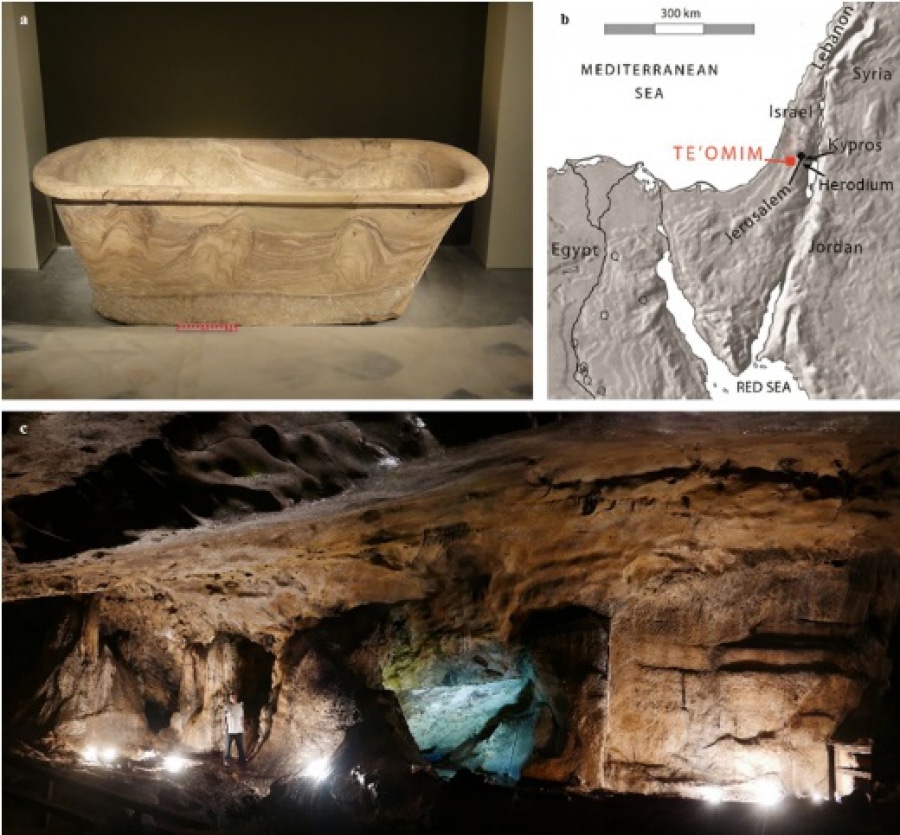King Herod’s baths: Israeli scientists from Bar-Ilan University and the Hebrew University of Jerusalem have refuted the well-known hypothesis that Israeli calcite alabaster artefacts were made from material extracted exclusively in Egypt.
This conclusion also applies to luxury and household items made of calcite alabaster, which includes the baths of Herod the Great. The study, published in Scientific Reports, confirms that the alabaster was mined in Israel. And the baths of King Herod were made of local material. The discovery was made thanks to a recent discovery by archaeologists. In the cave of Theomim, on the western slopes of the hills of Jerusalem, they discovered quarries of calcite alabaster. It was previously thought that in the southern Levant (modern-day Israel and Palestine) there were no ancient quarries for this mineral, and that all the calcite alabaster vessels in the Levant came from Egypt, and that vessels of lower quality than gypsum are local products. Since the Bronze Age, Egypt has played a crucial role in the emergence of calcite alabaster products in Israel and the development of the local gypsum-alabaster industry. The results of the scientific work for the first time allow distinguishing the calcite alabaster of Israeli origin from the Egyptian one.
“The fact that the material for the two baths was unequivocally obtained in Israel and not in Egypt, as might be expected, as the quality of the stone is high, was a special surprise. This means that Herod the Great used local products, and the production of calcite alabaster in Judea in the second half of the first century BC was quite developed and of sufficient quality to meet Herod’s luxury standards. one of the best builders among the kings of that period, “said Professor Aren Meir. Herod I the Great is from a king (37 BC – 4 BC) of Judea, Galilee, Samaria and other territories. He was appointed proconsul by Rome and became the ancestor of the Herodias dynasty.
The Romans placed him on the throne of Judea after the weakening of the Hasmonean dynasty and a brief period of Parthian control of the area. During the civil wars during the establishment of the Roman Empire, he managed to gain influence in Rome and establish himself for a long time as ruler of Judea. Herod is very unpopular with his Jewish subjects, who consider him a usurper and a foreigner – because of his Edomite origins and his dubious attachment to Judaism, forcibly imposed on Edom in the time of his father. Both the Christian New Testament and Jewish authors such as Josephus describe in detail his dynastic assassinations. At the same time, the mass murder of children at the birth of Jesus Christ described in the New Testament is not mentioned in other sources and is probably based on the Old Testament story of Moses’ childhood. Herod developed large-scale construction work in many places in Judea, his largest project being a major reconstruction and expansion of the Jerusalem Temple, which continued long after his death around 3 BC.
Photo: Ayala Amir, Martin (Szusz) Department of Land of Israel Studies and Archeology, Bar-Ilan University












